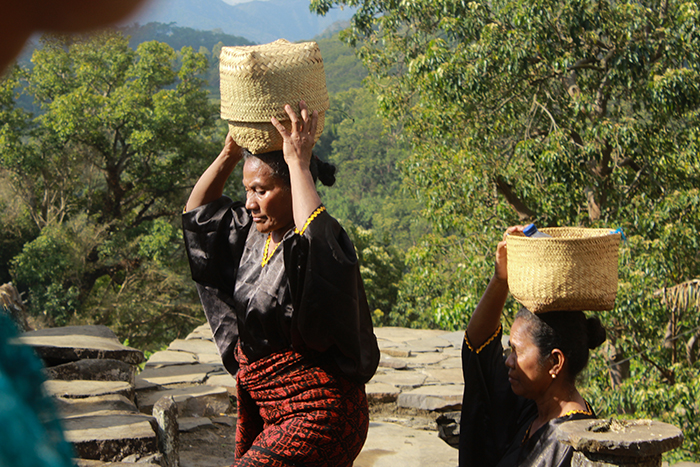Ende, Vox NTT– The People of Saga are known as the traditional village area which is still considered mystical. In addition to the uniqueness of the form of multi-storey villages and still traditional, a number of custom rituals are still very thickly celebrated.
For example, a customary ritual called “Nggua“. This ritual is an annual agenda that is often held in early September. Nggua customary rituals according to traditional customs Saga is as a symbol of thanks giving of farming life.
Communities that in fact work as farmers held customary party in accordance with the civility of daily life. Some Nggua ritual sequences are held in one week. Starting from Nggua Uta, Uwi, Tuu are tuu, Roro Uwi to the peak at the Gawi Sodha dance.
Some of these rituals become a unity of traditional events “Nggua” which symbolizes the life of farming since the new land was openned until the feast of the results of farming.
The Nggua series is meaningful as the emblem for tying the fraternity between “Mosalaki” or the traditional elders with “ana kalo fai walo” to build fellowship while worshiping God, the universe and the ancestors. Nggua ritual is led by Mosalaki who holds power in the local area.
In Saga village, there are seven Mosalaki who have similar governmental authority to the bureaucracy.They (Mosalaki) are incorporated in the Saga custom community controlling the entire series of traditional Nggua as it has become the hallmark of the ancestors. While other indigenous peoples follow solemnly.

Philipus Kami, one of the descendants of Mosalaki explain the civility of Saga society depends on customary tradition and the universe. Therefore, the inner connections and communication networks of Saga indigenous people has been dependent on these two components.
People who already live very familiar consider that Nggua customary ritual is a part of their own identity. Therefore, the success of a business is sanctioned by the sacred ritual. Philip explained that Nggua’s traditional rituals start from the “So Au” stage. This ritual shows a new place of opening stage of the field. This stage is followed by some restrictions on the “Ngeti” ritual.
Furthermore, the stage of clearing the field with a burning ceremony that ends at the “Seru Fata” event or rejects all kinds of pests to make the field bring abundant success. The fields have been prepared and the next step is to plant or called “Tedo“. The first stage of “Tedo” was performed by Mosalaki as the ulayat holder of the area. Subsequently performed by ordinary people or landowners.
Nggua “Uta Bue” will be done when the plant is three months old. This is the same as the nuts eating ceremony.
This symbol, according to Philip, recalls the succession of successive ancestors to posterity. This philosophy is derived from the form of long beans whose seeds are arranged. After the plants are ripe, the next stage is” Keti Pare” or rice harvest which is then stored in a barn or “bengge“.
Then carried out a rite of eating new rice and ending on the expulsion of pest disease on the next garden match. The whole series of rites is marked by a Gawi dance show. This dance signifies that all indigenous peoples remain grateful for the results.
This dance is performed in the yard of a traditional house or called “Tubu Kanga“. The circle of stone is the center of traditional dance Gawi Sodha Before the dance, the Mosalaki first gave offerings to the ancestors in the form of food and arak or moke (tradisional wine).
Afterwards, the Mosalaki started Gawi then followed by ordinary people. Residents who come from outside are allowed to follow Gawi but must follow for three years in a row. Members of the Gawi dance led by the Mosalaki is also required to wear Lio custom fabric. In case of breaking of the above obligation it will get a risk like defect or risk of death. This is evidenced in previous ceremonies.
This Gawi event is routinely followed by all Saga indigenous people. Both in the village of Saga and in the overseas, because Gawi shows the civilization of Saga indigenous people which is meaningful to build fellowship.
After all Nggua rituals take place, the last stage is the evaluation of Mosalaki talking about problems or violations during the ritual process. This is done as a restoration in order not to be happen in the next year’s rites.
(Ian Bala / VoN) Translated by Rini Kartini/HOS







